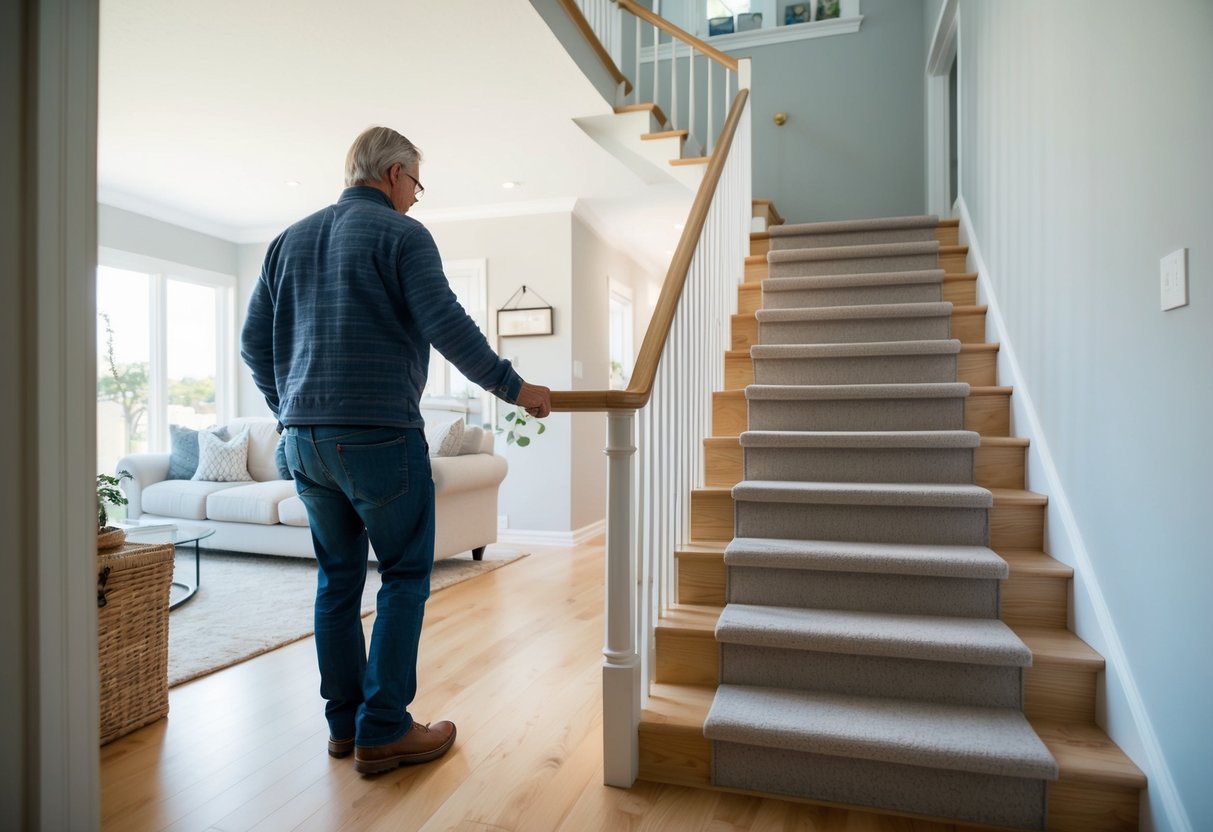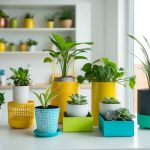Essential Safety Tips for First-Time Homeowners: Avoid Common Pitfalls
Preventing Slips, Trips, and Falls

Slips, trips, and falls are significant concerns in maintaining a safe home environment. Key areas to focus on include ensuring staircases are secure and managing clutter effectively, including keeping rugs in place.
Staircase Safety
Staircases are common areas where falls occur. Homeowners should ensure handrails are firmly attached on both sides and extend the full length of the stairs. It’s important to have adequate lighting, especially at the top and bottom of the stairs. This can significantly reduce accidents.
Steps should be even and clear of any loose items. Installing non-slip treads on each step can increase grip. Regular checks for any damage or wear to the steps and repairing them promptly enhances safety. Homeowners should remind any household members and guests to use the handrails to prevent accidents.
Securing Rugs and Clutter Management
Misplaced rugs and clutter can lead to trips and falls. Rugs should have non-slip pads or grippers underneath to keep them stable on hard floors. It’s vital that rugs lay flat without any folds or edges curling up, as this can pose a trip hazard.
Clutter such as toys, shoes, and other objects should be stored properly. Designate storage spaces and ensure pathways are clear and well-lit to reduce trip risks. Regular cleaning and organization can be beneficial in maintaining a safe space. Immediate attention to spills and other potential slipping risks helps ensure that the home environment remains safe for all occupants.
Water Safety: Preventing Drowning and Scalds

Ensuring water safety involves taking specific steps to prevent drowning incidents and scald injuries. Two critical areas demanding attention are bathroom and pool safety measures and the appropriate setting of water heater temperatures.
Bathroom and Pool Safety
Drowning poses a serious risk in homes with bathtubs and swimming pools, especially for children and pets. Never leave young children unattended near water, including the bathroom and pool areas. Keep bathroom doors closed to reduce unsupervised access. Consider installing self-closing toilet lids to prevent accidents.
For pools, a fence with a self-latching gate offers crucial security. Alarms can alert homeowners to unauthorized pool access, giving them time to respond quickly. Pool covers add another layer of protection by keeping the water surface out of reach when the pool is not in use.
Setting Water Heater Temperature
Maintaining the water heater at a safe temperature is essential to prevent scalds. It’s advisable to set the water heater’s thermostat to no higher than 120°F (49°C). Temperatures above this can cause severe burns in a matter of seconds, especially for children and the elderly.
Check water temperatures with a thermometer before allowing children to bathe to ensure it is safe. Periodically review and adjust the water heater settings, as necessary, to accommodate seasonal variations. Installing an anti-scald device on faucets and showerheads provides an additional safeguard, giving you peace of mind while protecting vulnerable skin from unexpected temperature fluctuations.
Securing Your Home From Intruders
First-time homeowners must pay attention to securing their homes from intruders. Effective security involves investing in reliable systems and paying close attention to vulnerable entry points like doors and windows. Taking these measures can significantly enhance safety and provide peace of mind.
Security Systems and Measures
Modern security systems offer an array of options that can be tailored to individual needs. Homeowners should consider alarm systems that provide 24/7 monitoring. Many systems now include mobile app connectivity, allowing for real-time alerts and control.
Cameras placed strategically around the property can deter potential intruders and provide valuable evidence if an incident occurs. Smart lighting solutions, which turn lights on or off at specific times or in response to motion, can give the appearance that someone is home, further deterring intruders.
Door and Window Security
Doors and windows are the primary points of entry for intruders, making it essential to reinforce their security. Solid core or metal doors, along with high-quality locks like deadbolts, offer significant protection. Homeowners should ensure that hinges are secured on the inside to prevent tampering.
Window locks should be robust and well-maintained. Additional security like window bars or shatter-resistant film can add an extra layer of safety. Motion detectors or glass break sensors integrated into the security system can act as an early warning for unusual activities around these vulnerable points.



